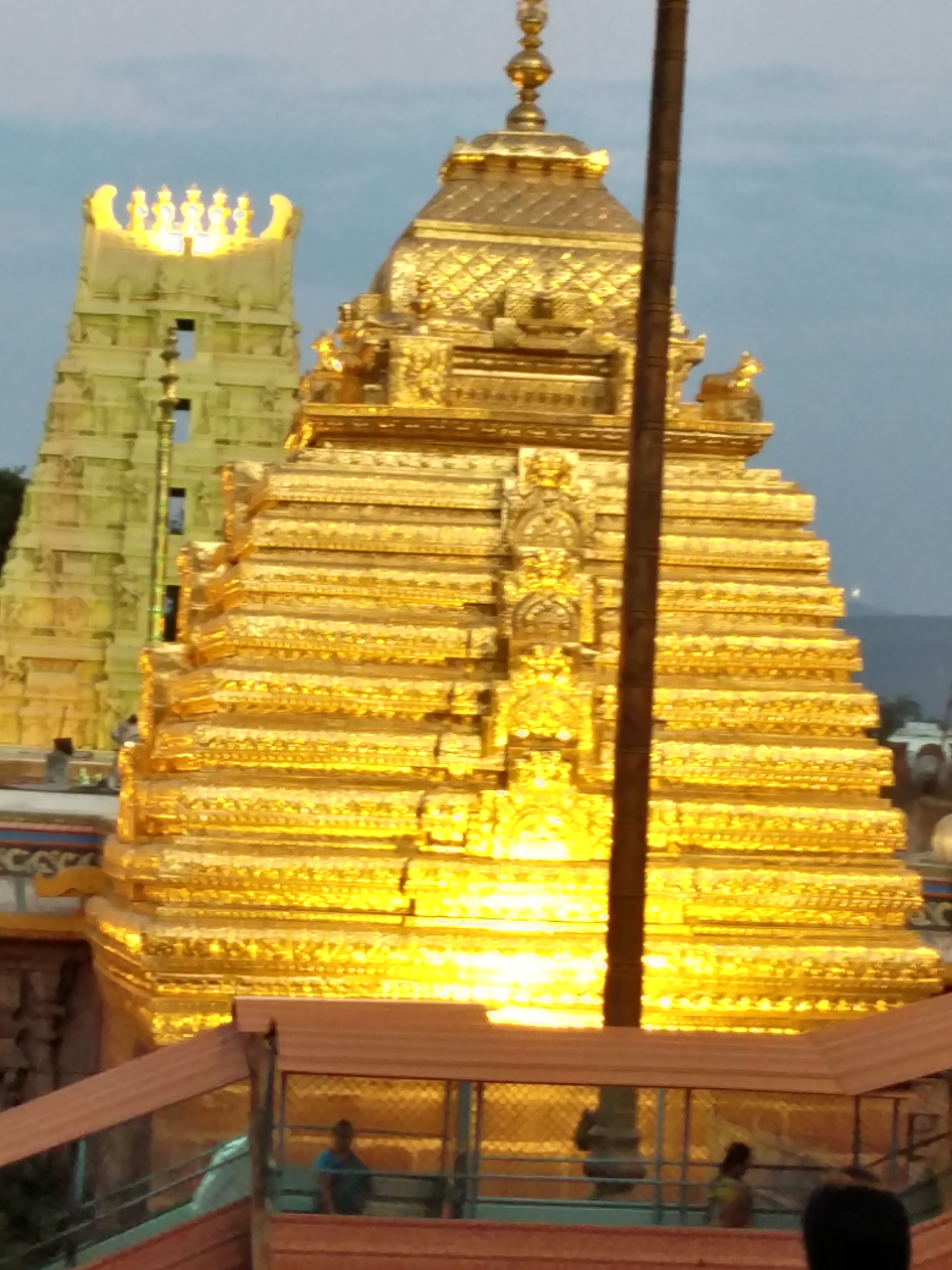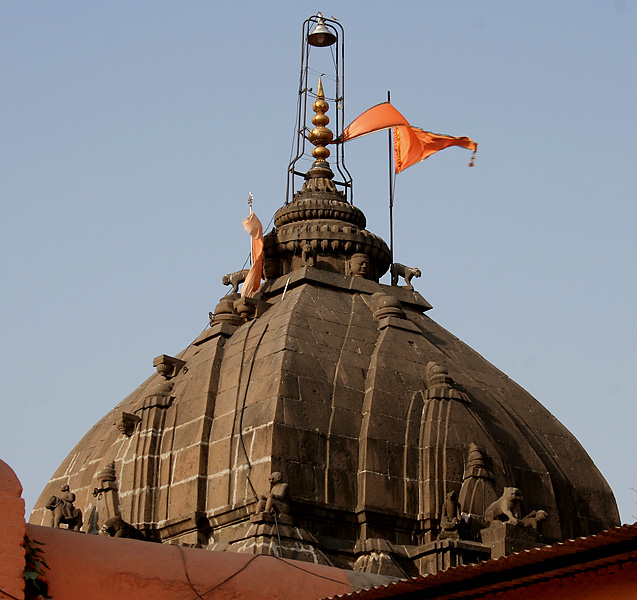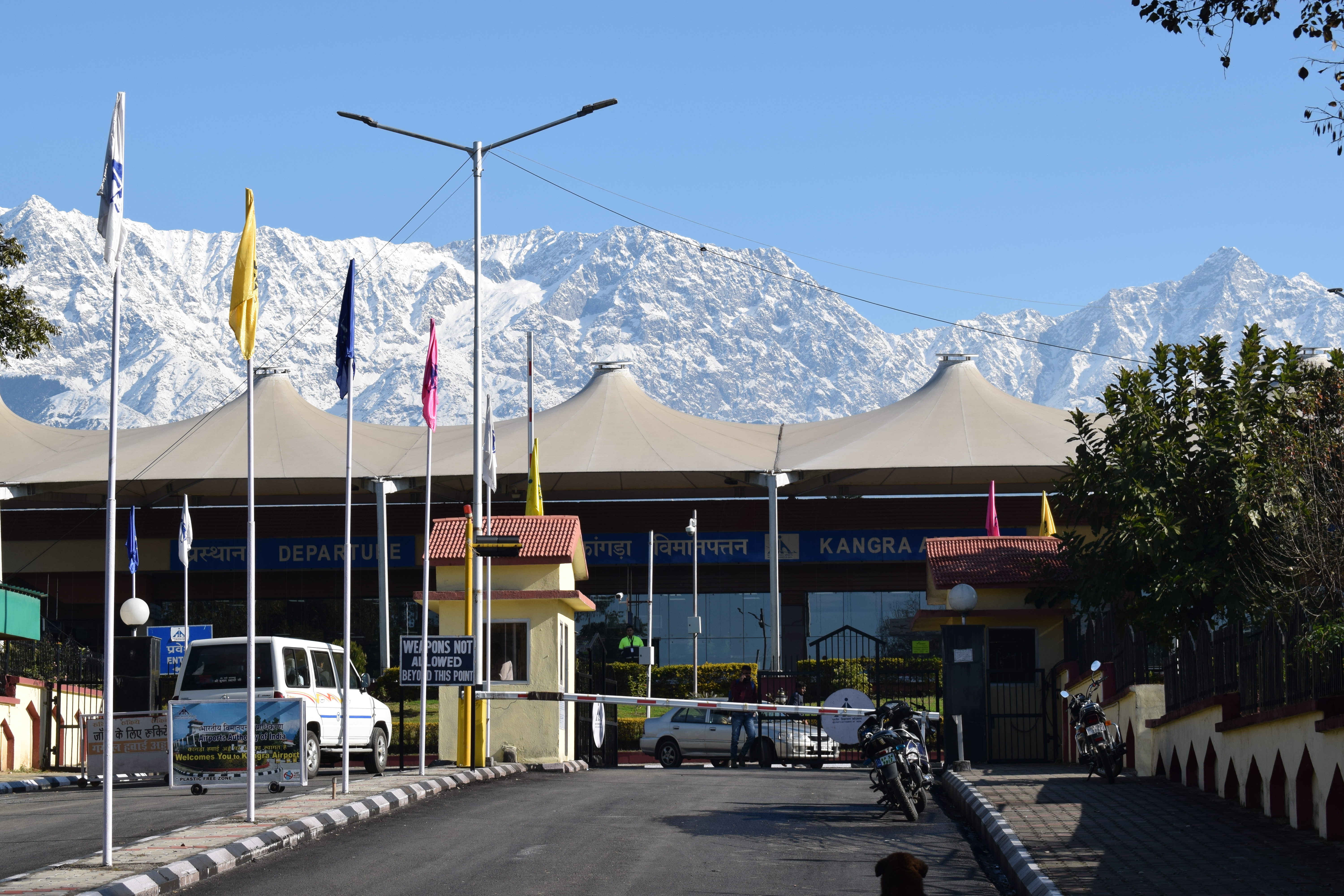|
Vaidyanath Jyotirlinga
Vaidyanath Jyotirlinga, also known as Baidyanath, Vaijnath and Baijnath is one of the twelve Jyotirlingas, the most sacred abodes of Shiva. However, the location of the Jyotirlinga is contested as the Government of India hasn't notified one of these temples as the Jyotirlinga. The claimed temples with their locations are: * Shri Vaijnath Temple, Parli, Maharashtra *Baidyanath Temple, Deoghar, Jharkhand *Baijnath Temple, Kangra, Himachal Pradesh Background In ''Dvādaśa Jyotirliṅga Smaranam'', the 12 jyotirlingas are described as follows: While in ''Dvādaśa Jyotirliṅga Stotram'', the 12 jyotirlingas are described as follows: All three temples are reluctant to relinquish their claim despite the ancient Stotram mentioned Shri Vaijnath Temple of parali Maharashtra Additionally, In January 2018, Government of Madhya Pradesh and the management committee of Mahakaleshwar Jyotirlinga organized a congregation of priests from all the 12 Jyotirlingas where the priests from Sh ... [...More Info...] [...Related Items...] OR: [Wikipedia] [Google] [Baidu] |
Jyotirlinga
A Jyotirlinga () or Jyotirlingam is a devotional representation of the Hindu god Shiva. The word is a Sanskrit compound of ('radiance') and ('sign'). The Śiva Mahāpurāṇam (also ''Shiva Purana'') mentions 64 original ''jyotirlinga'' shrines in India. Hinduism Legend According to a Shiva legend from the Shiva Purana, once, Brahma (the god of creation) and Vishnu (the god of preservation) had an argument over their supremacy. To settle the debate, Shiva pierced the three worlds, appearing as a huge, infinite pillar of light, the ''jyotirlinga.'' Brahma and Vishnu decided to ascend and descend across a pillar of light respectively, to find the end of the light in either direction. According to some iterations, Vishnu assumed his Varaha avatar to achieve this task, while Brahma rode a hamsa (swan). Brahma lied that he had discovered the end of the light, producing a ketakī flower as proof, while Vishnu admitted that he could not find the end of the light from his j ... [...More Info...] [...Related Items...] OR: [Wikipedia] [Google] [Baidu] |
Shiva
Shiva (; , ), also known as Mahadeva (; , , Help:IPA/Sanskrit, [mɐɦaːd̪eːʋɐh]) and Hara, is one of the Hindu deities, principal deities of Hinduism. He is the God in Hinduism, Supreme Being in Shaivism, one of the major traditions within Hinduism. Shiva is known as ''The Destroyer'' within the Trimurti, the Hinduism, Hindu trinity which also includes Brahma and Vishnu. In the Shaivite tradition, Shiva is the Supreme Lord who creates, protects and transforms the universe. In the goddess-oriented Shaktism, Shakta tradition, the Supreme Goddess (Devi) is regarded as the energy and creative power (Shakti) and the equal complementary partner of Shiva. Shiva is one of the five equivalent deities in Panchayatana puja of the Smarta Tradition, Smarta tradition of Hinduism. Shiva has many aspects, benevolent as well as fearsome. In benevolent aspects, he is depicted as an Omniscience, omniscient yogi who lives an Asceticism#Hinduism, ascetic life on Kailasa as well as a house ... [...More Info...] [...Related Items...] OR: [Wikipedia] [Google] [Baidu] |
Shri Vaijnath Temple
Shri Vaidyanatha Temple (Marathi श्री वैजनाथ मंदिर ) is a temple to Shiva in Parli Vaijnath in the Beed district of Maharashtra, India. While performing the rite of Abhishekam Abhisheka () is a religious Ritual, rite or method of prayer in which a devotee pours a liquid offering on an image or murti of a deity. This is common to religions such as Hinduism, Buddhism and Jainism. Hinduism An abhiṣeka is conducted ... male devotees are not allowed to wear clothes above the waist. It's the 5th Jyotirlinga among 12 jyotirlinga of lord Shiva. Architecture The temple is approximately 75-80 feet high. The main entrance is a brass-plated door at the east. The temple was renovated in 1706. References External links Shree Vaijnath Templeat Beed Government web Jyotirlingas Hindu temples in Maharashtra Tourist attractions in Beed district Shaivism {{Hinduism-stub ... [...More Info...] [...Related Items...] OR: [Wikipedia] [Google] [Baidu] |
Parli, Maharashtra
Parli Vaijnath is a city and a municipal council in Beed district in the Indian state of Maharashtra. Parli is Second largest city in terms of size and population in Bid district. It is the headquarters of the Parli taluka of Beed district.There are 12 Jyotirlinga in India one of which is Vaidyanath Jyotirlinga located in Parli Vaijnath. About Parli is in Beed district identified by Shri Vaijnath Temple. Vaijnath temple is one of the 12 Jyotirlinga and Maharashtra State Power Generation Company Limited Parli Thermal Power Station. Other major industries include Vaijnath Sugar Factory,The India Cements Ltd and Ghawalkar Engine,Transmission and Motor Repair and Overhaul Facility. The Head office of Vaidyanath Co-Operative Bank is located in Parli. One of the biggest fair in Maharashtra takes place here on Mahashivratri. Parli is the largest taluka place in Marathwada region of Maharashtra. According to Ancient Scriptures It is said that Savitri and Satyavan lived here, and t ... [...More Info...] [...Related Items...] OR: [Wikipedia] [Google] [Baidu] |
Baidyanath Temple
Baidyanath Temple (IAST: Baidyãnath), also known as Baba Baidyanath Dham, is a Hindu temple dedicated to Shiva. It is located in Deoghar, in the Santhal Parganas division of the Indian state of Jharkhand. The temple complex comprises the central shrine of Baba Baidyanath along with 21 additional temples. It is significant to the Hindu sects of Shaivism as this temple is referred to as one of the twelve Jyotirlingas. Legend According to the legends, Ravana was performing penance in the Himalayan region to appease Shiva. He offered nine of his heads as an offering to Shiva. As he was to sacrifice his tenth head, Shiva appeared before him and expressed satisfaction with the offering. Then, Shiva asked what boon he desired. Ravana asked to take the "Kamna Linga'' to the island of Lanka and expressed his desire to take Shiva from Kailash to Lanka. Shiva agreed to Ravana's request but with a condition. He said that if the lingam was placed en route, it would become the permanent ... [...More Info...] [...Related Items...] OR: [Wikipedia] [Google] [Baidu] |
Deoghar
Deoghar (pronounced ''Devghar'') is a city and a municipal corporation in Deoghar district in the Indian state of Jharkhand. It is also the administrative headquarters of Deoghar district. It is a holy place of Hinduism. The city is primarily known for Baidyanath Temple, one of the 12 ''Jyotirlinga''s of Shiva, one of the principal deities in Hinduism. The sacred temples of the city make this a place for pilgrimage and tourists. The city is very sacred to the followers of Hinduism. The city is administrative headquarter of Deoghar District which comes under Santhal Parganas division of Jharkhand. It is the fifth largest city in Jharkhand and also known as the cultural capital of Jharkhand. Geography Location Deoghar is located at . It has an average elevation of 255 metres (833 feet). It is a part of the Indian peninsular plateau which forms a part of the oldest landmass on Earth, Gondwana land. Deoghar is situated on the bank of Ajay river (which originates ... [...More Info...] [...Related Items...] OR: [Wikipedia] [Google] [Baidu] |
Baijnath Temple
Baijnath Temple (Devanagari: बैजनाथ मंदिर) is a Nagara style Hindu temple situated in a small town of Baijnath located in Kangra District, Himachal Pradesh, India, and was built in 1204 AD by two local merchants named Ahuka and Manyuka. It is dedicated to Shiva as Vaidyanath (Devanagari: वैद्यनाथ), meaning ‘the lord of physicians’. The temple is protected and conserved by the Archaeological Survey of India (ASI). History According to the inscriptions on the present day Baijnath temple structure, a temple of Shiva had existed before construction of present-day structure. The inner sanctum houses a Shiva lingam. Further images are carved in the walls and in niches on the exterior. In 1786, ruler Sansar Chand took control of the Kangra Fort and he undertook the renovation and restoration of the temple. An inscription in the temple mentions that the family priest of Sansar Chand named Ganga Ram led the repair works of the temple, which ... [...More Info...] [...Related Items...] OR: [Wikipedia] [Google] [Baidu] |
Kangra, Himachal Pradesh
Kangra is a city and a municipal council in Kangra district in the Indian States and territories of India, state of Himachal Pradesh. It is also known as ''Nagarkot''. Meaning of Kangra Kangri word in Ladakh/Lahaul means snow on top of mountain. Since snow capped mountains are visible from the city of Kangra, therefore it is named Kangra (town of snow laden peaks). History Historically known as Kiraj and Trigarta,Blankinship, Khalid Y, "The End of Jihad State ", pp132 the town of Kangra was founded by Katoch Kshatriya Rajputs of Chandervanshi Lineage. The Katoch Rajas had a stronghold here, with a fort and lavish temples. Another ancient name of the city is Bhimagar and it was supposedly founded by Raja Bhim, younger brother of Kuru Emperor Yudhishthira of Indraprastha (now Delhi). The temple of Devi Vajreshwari was one of the oldest and wealthiest in northern India. It was destroyed, together with the fort and the town, by 1905 Kangra earthquake on 4 April 1905, when 13 ... [...More Info...] [...Related Items...] OR: [Wikipedia] [Google] [Baidu] |
Sanskrit
Sanskrit (; stem form ; nominal singular , ,) is a classical language belonging to the Indo-Aryan languages, Indo-Aryan branch of the Indo-European languages. It arose in northwest South Asia after its predecessor languages had Trans-cultural diffusion, diffused there from the northwest in the late Bronze Age#South Asia, Bronze Age. Sanskrit is the sacred language of Hinduism, the language of classical Hindu philosophy, and of historical texts of Buddhism and Jainism. It was a lingua franca, link language in ancient and medieval South Asia, and upon transmission of Hindu and Buddhist culture to Southeast Asia, East Asia and Central Asia in the early medieval era, it became a language of religion and high culture, and of the political elites in some of these regions. As a result, Sanskrit had a lasting effect on the languages of South Asia, Southeast Asia and East Asia, especially in their formal and learned vocabularies. Sanskrit generally connotes several Indo-Aryan languages# ... [...More Info...] [...Related Items...] OR: [Wikipedia] [Google] [Baidu] |
International Alphabet Of Sanskrit Transliteration
The International Alphabet of Sanskrit Transliteration (IAST) is a transliteration scheme that allows the lossless romanisation of Indic scripts as employed by Sanskrit and related Indic languages. It is based on a scheme that emerged during the 19th century from suggestions by Charles Trevelyan, William Jones, Monier Monier-Williams and other scholars, and formalised by the Transliteration Committee of the Geneva Oriental Congress, in September 1894. IAST makes it possible for the reader to read the Indic text unambiguously, exactly as if it were in the original Indic script. It is this faithfulness to the original scripts that accounts for its continuing popularity amongst scholars. Usage Scholars commonly use IAST in publications that cite textual material in Sanskrit, Pāḷi and other classical Indian languages. IAST is also used for major e-text repositories such as SARIT, Muktabodha, GRETIL, and sanskritdocuments.org. The IAST scheme represents more than a centu ... [...More Info...] [...Related Items...] OR: [Wikipedia] [Google] [Baidu] |
Maharashtra
Maharashtra () is a state in the western peninsular region of India occupying a substantial portion of the Deccan Plateau. It is bordered by the Arabian Sea to the west, the Indian states of Karnataka and Goa to the south, Telangana to the southeast and Chhattisgarh to the east, Gujarat and Madhya Pradesh to the north, and the Indian union territory of Dadra and Nagar Haveli and Daman and Diu to the northwest. Maharashtra is the second-most populous state in India, the third most populous country subdivision in South Asia and the fourth-most populous in the world. The state is divided into 6 divisions and 36 districts. Mumbai is the capital of Maharashtra due to its historical significance as a major trading port and its status as India's financial hub, housing key institutions and a diverse economy. Additionally, Mumbai's well-developed infrastructure and cultural diversity make it a suitable administrative center for the state, and the most populous urban are ... [...More Info...] [...Related Items...] OR: [Wikipedia] [Google] [Baidu] |
Government Of Madhya Pradesh
The Government of Madhya Pradesh (abbreviated as MP) or Madhya Pradesh Government, is the supreme governing authority of the Indian state of Madhya Pradesh and its 55 districts. It consists of an executive, led by the governor of Madhya Pradesh, a judiciary and a legislative branch. In 2000, the southern portion was broken off to form the new state of Chhattisgarh with its own government. Executive Like other states in India, the head of state of Madhya Pradesh is the governor, appointed by the president of India on the advice of the Central government. The governor's post is largely ceremonial. The chief minister is the head of government and is vested with most of the executive powers and financial powers. Bhopal is the capital of Madhya Pradesh, and houses the Madhya Pradesh Vidhan Sabha (Legislative Assembly) and the secretariat. Council of Ministers On 25 December 2023, Chief Minister Mohan Yadav inducted 28 ministers into his council of ministers. ... [...More Info...] [...Related Items...] OR: [Wikipedia] [Google] [Baidu] |







